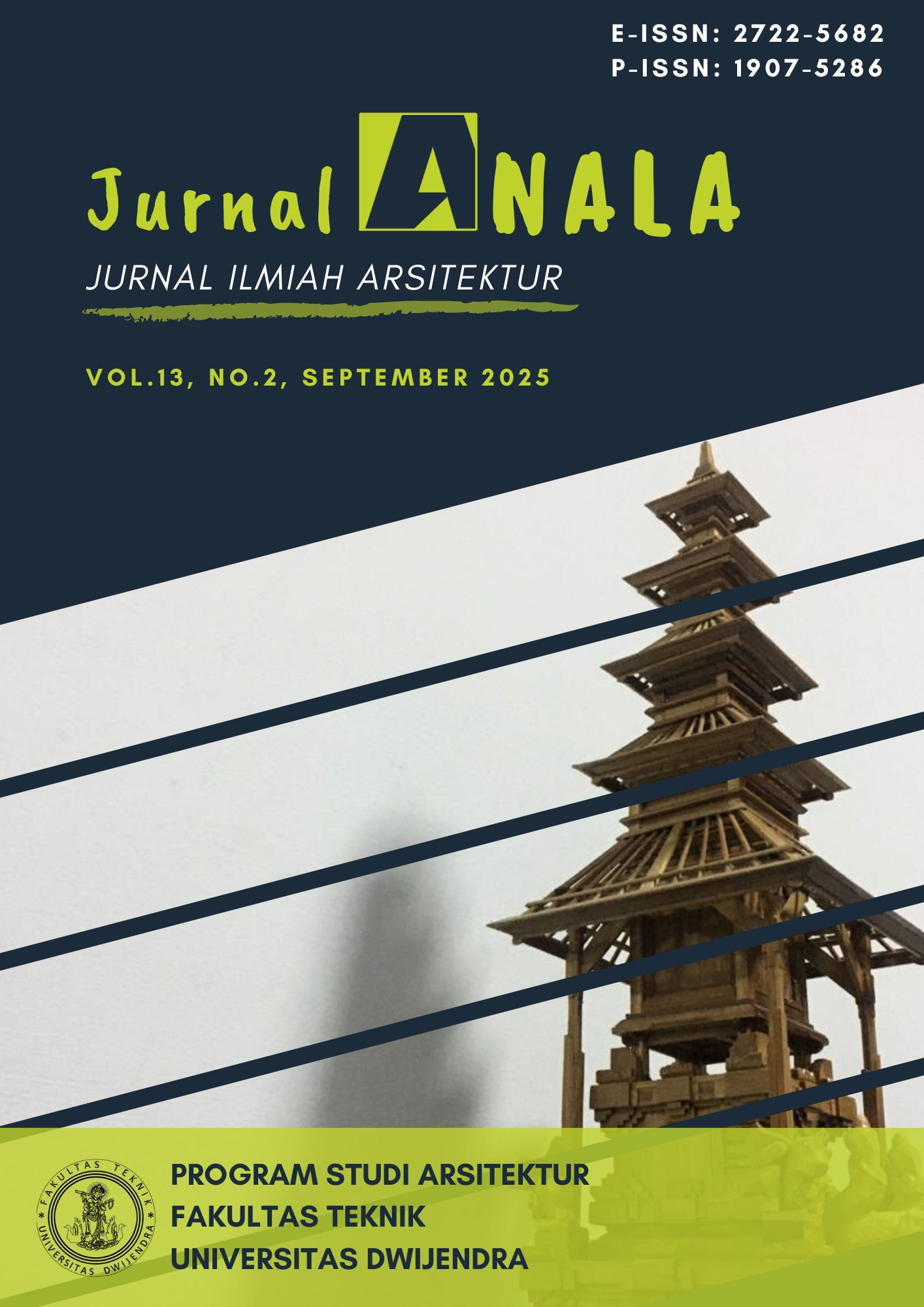Lokalitas Arsitektur Tradisional Bali dan Konsep Tri Hita Karana Pada Gereja Katolik Paroki Roh Kudus Katedral Denpasar Pasca Renovasi
DOI:
https://doi.org/10.46650/anala.13.2.1657.27-37Keywords:
Keywords: tri hita karana, architecture traditional bali, locality, church, renovationAbstract
References
Gelebet, I N. dkk. (1982). “Arsitektur Tradisional Daerah Bali.” Denpasar: Proyek Inventarisasi Kebudayaan Daerah Kanwil Depdikbud Propinsi Bali.
Karso, Olih. 2022. " Inkulturisasi Gereja Katolik Hati Kudus Yesus Palasari, Bali. Working Paper, ISI Denpasar-Bali Hal.2-14. (Diakses 26 September 2024).
Laurens, Joyce. 2013. "Memahami Arsitektur Lokal dari Proses Inkulturisasi pada Arsitektur Gereja Katolik di Indonesia". Seminar Nasional Reinterpretasi Identitas Arsitektur Nusantara, ISBN No. 1234-5678. (Diakses 26 September 2024).
Majelis Lembaga Adat Bali. (1992). “Peraturan Majelis Lembaga Adat Bali.”
Sudiarta, I. Nyoman Tradisional Bali.
Suryada, I Gusti Bagus (2020). “Konsepsi Tri Mandala Dan Sanga Mandala Dalam Tatanan Arsitektur Tradisional Bali,” 10. Uploads/2012/07/V1N1-p051-p062-Aplikasi-Metoda-N.J.-Habraken-pada-Studi-Transformasi-
Wardani, Ivanna Wisnu (2015). “Aplikasi Filosofi Tri Hita Karana dalam konsep Perencanaan Lansekap Gereja Katolik Santa Maria Immaculata, Tabanan.” Jurnal Arsitektur Lansekap 1 (1): 20-29.
Waskita, Dewa Nyoman (2005). “Penerapan Konsep Tri Hita Karana dalam Perencanaan Perumahan di Bali” Jurnal Permukiman Natah 3 (2): 62-105.
Additional Files
Published
How to Cite
Issue
Section
Citation Check
License
Copyright (c) 2025 Desy Yuliastuti Ida Ayu Made, Ikaputra

This work is licensed under a Creative Commons Attribution-NonCommercial 4.0 International License.
















